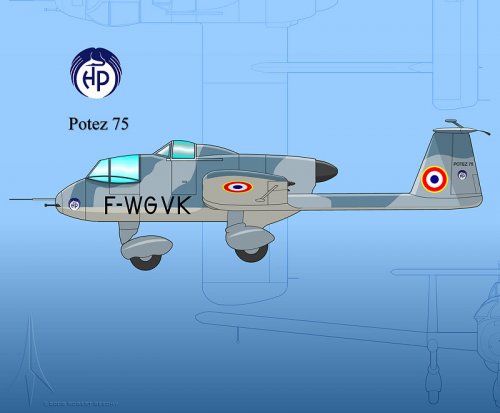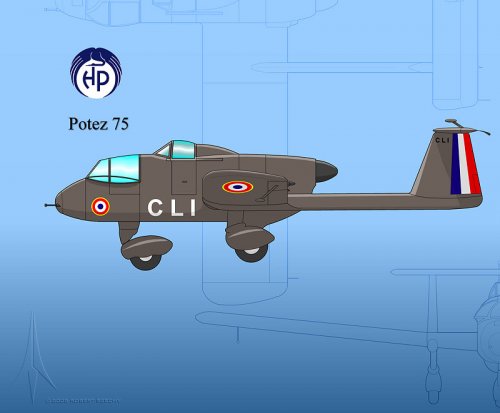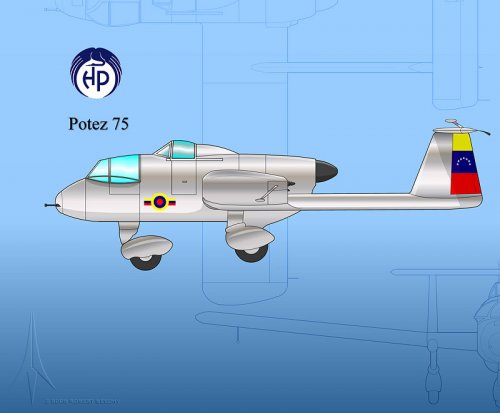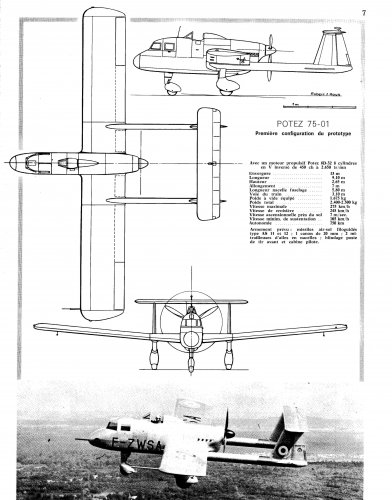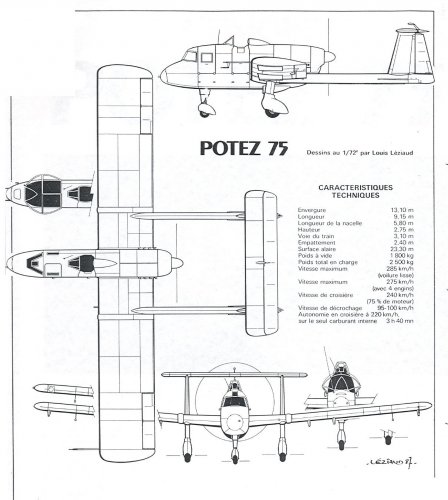A few Potez 75 profiles I did for my Uncommon Aircraft website, including speculative French Army and Venezuelan aircraft:
You are using an out of date browser. It may not display this or other websites correctly.
You should upgrade or use an alternative browser.
You should upgrade or use an alternative browser.
Potez 75
- Thread starter Robert
- Start date
tonton42
ACCESS: Restricted
- Joined
- 19 January 2009
- Messages
- 16
- Reaction score
- 1
Hello from France !Robert said:A few Potez 75 profiles I did for my Uncommon Aircraft website, including speculative French Army and Venezuelan aircraft:
I'am just arriving on your site and what a surprise ! you are speaking about of the Potez75 ! This ugly bird was a french prototype, may be a "COIN" ancestor, developped it seems for algerian war in mid '50. His name come from the famous french artilery 75 mle 1897, wich was the gun of victory in 1918.
The 3 views drawing come from "le fanatique de l'aviation", the better and older french review over war aircraft.
Attachments
Thanks. That's the most detailed drawing of the initial configuration of the Potez 75 that I have seen so far.
F.L.
ACCESS: Top Secret
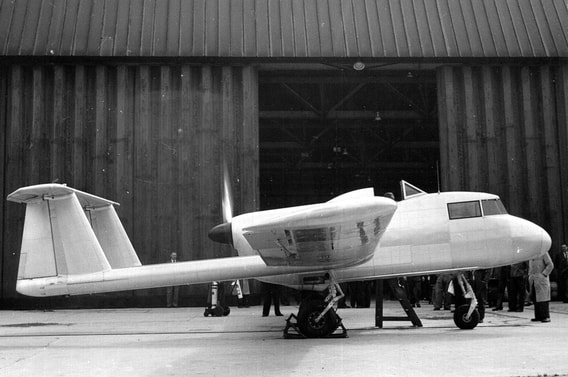
Présentation du POTEZ 75
Présentation du POTEZ 75, qui fut expérimenté par l'ALAT dans les années 1950.
www.alat.fr
F.L.
ACCESS: Top Secret
Presentation.
Conceived outside the official program, intended as an anti-tank aircraft useful in the context of a classic conflict in Europe, the only example flew for the first time on June 10, 1953 under the registration F-ZWSA.
A short take-off and landing aircraft (STLA), usable from undeveloped land, two-seater, two-beam, equipped with an engine in the rear position and a propelling propeller, the fixed tricycle landing gear aircraft immediately showed its shortcomings. Initially, the pilot was isolated in an open cockpit. Moreover, installed in the front in the glass nose, the servant-shooter of the weapons on board was dependent on the manoeuvre of the pilot, who could not release the opening of the fire!
Rejected as an anti-tank aircraft, the POTEZ 75 was proposed to the armies as a ground support, observation and police aircraft for the overseas territories.
For this purpose, at the end of 1953, it was painted in a camouflage version (grey and green).
In 1954, it was planned to send it to Indochina for evaluation. The aircraft was then sent for tactical evaluation to the Mainz-Finthen Air Force training base. From there, the aircraft was transported to BAO136 Bremgarten for a short presentation for the Air Force. On the day of the return flight to Mainz, an engine fire occurred during takeoff, forcing the Army pilot to make an emergency landing.
With the front leg of the landing gear broken, the POTEZ was brought back to the factory.
In March 1955, repaired, fitted with a canopy at the pilot's station and re-registered as F-WGVK, it was nevertheless deemed unfit for operations on the European continent. However, in 1956, it was sent to Algeria for another operational experiment conducted jointly by Air Force and Army personnel.
In May 1956, a state order for 15 pre-production aircraft, followed by a series of 100 aircraft was placed. One year later, no aircraft had been produced. Without direct relation with the qualities of the POTEZ, but rather in the name of financial imperatives, the order was cancelled. In spite of this, the aircraft was continuously improved. Moreover, in 1957, the front post was modified by the installation of a panoramic canopy allowing a perfect vertical visibility.
On the other hand, the nose of the aircraft was equipped with cable cutters (a device that will be generalized on helicopters only after 1988).
In May 1958, abandoned by its manufacturer in a hangar of the Villacoublay airfield, the aircraft was nevertheless recovered by the ALAT and taken into account by the GALAT n° 7 of Buc-Satory.
With the registration F-MAFY, the POTEZ 75 was then used as a liaison aircraft by General REDON (COMALAT).
On September 2, 1958, while returning from an inspection at GALAT n° 6 of Tarbes, the aircraft was lost near Dompierre-les-Églises (Haute-Vienne), at a place called "Viville". The aircraft had engine problems, and the pilot, Chief Warrant Officer Marcel GAY, looked for a makeshift landing site. At the end of the landing, the POTEZ hit a hedge and rolled over and caught fire. The passenger, General REDON, was quickly extricated but, in spite of the help of farmers, the pilot perished in flames.
Similar threads
-
-
-
-
Potez 841L, 842L & 843 turboprop airliner projects......
- Started by Caravellarella
- Replies: 4
-
Light, fixed-wing anti-tank/ground attack aircraft projects
- Started by cluttonfred
- Replies: 78

